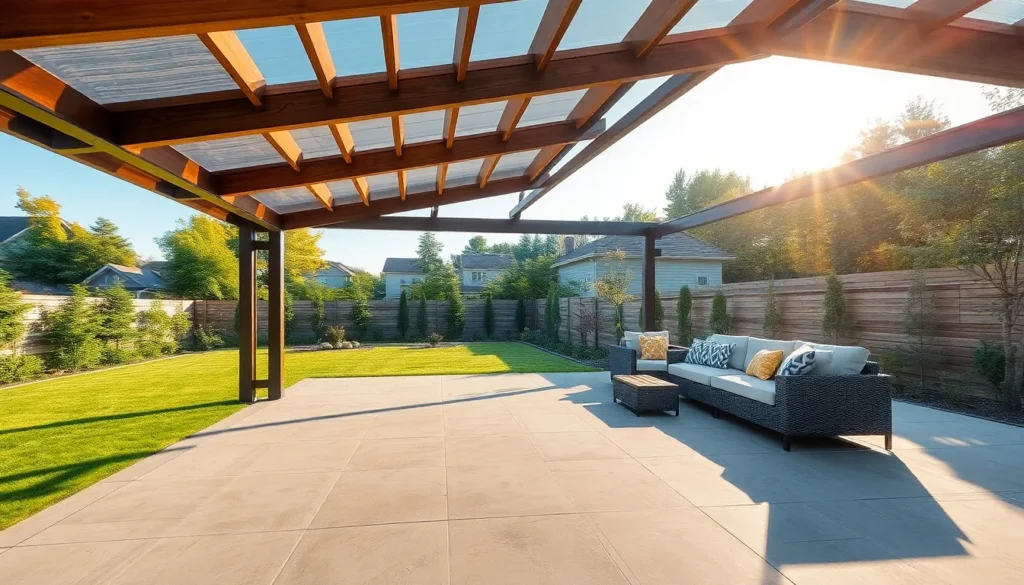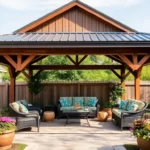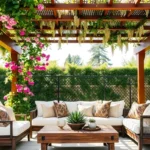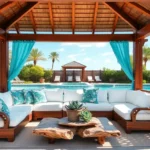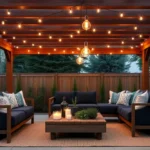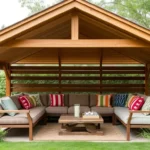Transforming your outdoor space into a modern oasis can elevate your home’s style and functionality, creating a sanctuary where memories are made and relaxation is paramount. Whether you’re a beginner eager to explore fresh ideas or a seasoned homeowner ready to enhance your patio with contemporary flair, understanding the newest trends in patio cover designs is key to crafting a space that is as inviting as it is stylish.
This year, we’re unveiling 12 innovative patio cover designs that promise to inspire and rejuvenate your outdoor haven. From sleek, minimalist structures to bold, statement-making covers, you’ll discover practical insights and creative solutions tailored to suit any backyard aesthetic. Embrace the possibilities and let these ideas guide you in crafting an outdoor retreat that reflects both your taste and lifestyle.
Choosing Sleek Aluminum Patio Covers
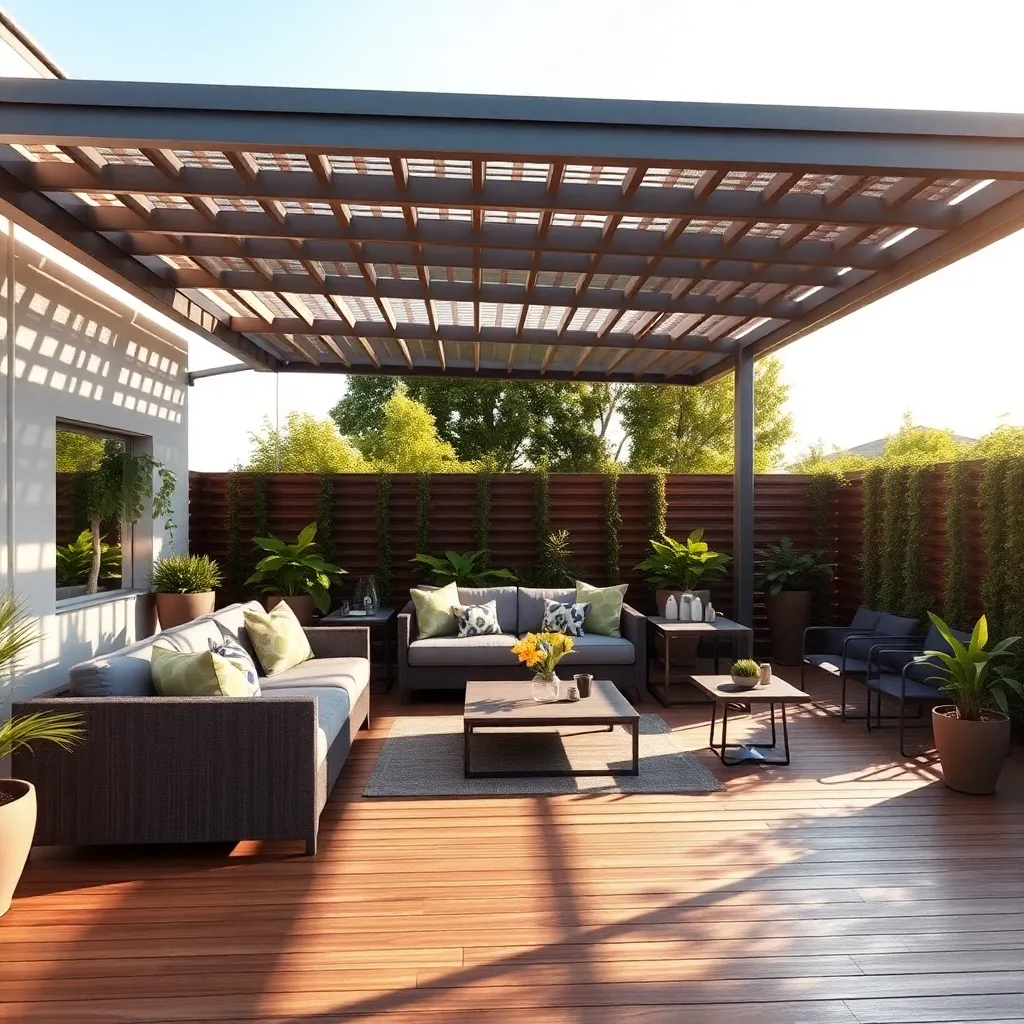
Choosing sleek aluminum patio covers can transform your outdoor space with their modern appeal and durability. Aluminum is lightweight yet strong, making it an excellent choice for any climate, from sunny to rainy environments. To maximize longevity and maintain its sleek look, consider a powder-coated finish to resist rust and fading. For beginners, opting for pre-fabricated kits can simplify installation, while experienced DIYers might enjoy customizing the design with unique beam patterns or integrated lighting.
For a more advanced touch, explore options like built-in gutter systems to manage water runoff seamlessly. Incorporating adjustable louvers can offer both shade and airflow control, enhancing comfort throughout the day. When selecting dimensions, ensure the cover extends slightly beyond your patio perimeter to provide ample coverage and protection from the elements. Also, pairing the aluminum cover with minimalist furniture and accessories can complete the contemporary aesthetic, creating a cohesive and stylish outdoor retreat.
Introducing Retractable Canopy Designs
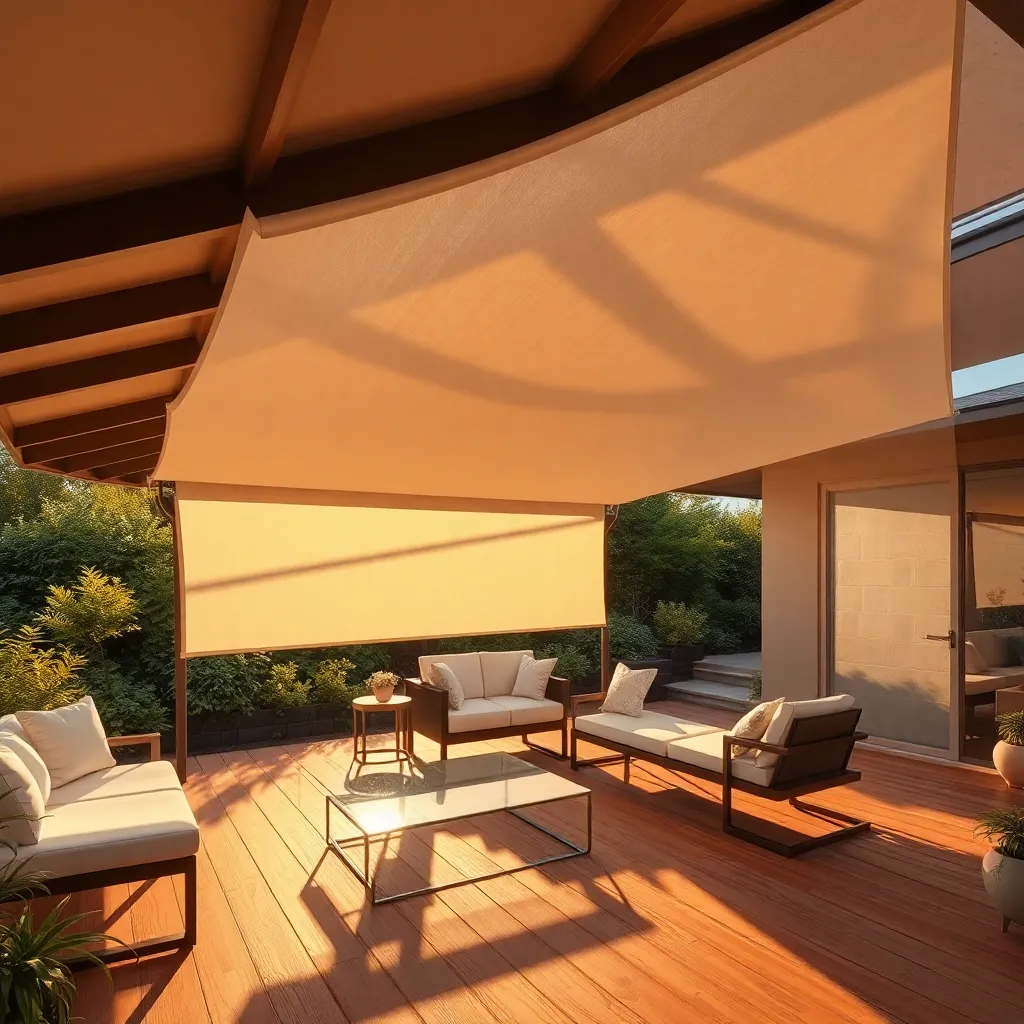
Retractable canopy designs offer a versatile and stylish solution for homeowners seeking flexible shade options for their patios. These canopies are typically made from durable materials like aluminum and UV-resistant fabrics, ensuring longevity and resilience against the elements. Consider installing a motorized system for ease of use, allowing you to extend or retract the canopy with the push of a button. For those who prefer a more hands-on approach, manual crank options are also available and are often more budget-friendly.
When planning your retractable canopy, it’s crucial to consider the size and layout of your patio to ensure optimal coverage. Measure your space carefully before purchasing, and consider a canopy that extends at least 10 feet to provide ample shade. For added sophistication, explore designs with integrated LED lighting or side screens for extra privacy and ambiance. By tailoring the canopy to fit your specific outdoor space, you’ll create a functional and inviting area perfect for relaxation or entertaining guests.
Exploring Transparent Glass Roof Options
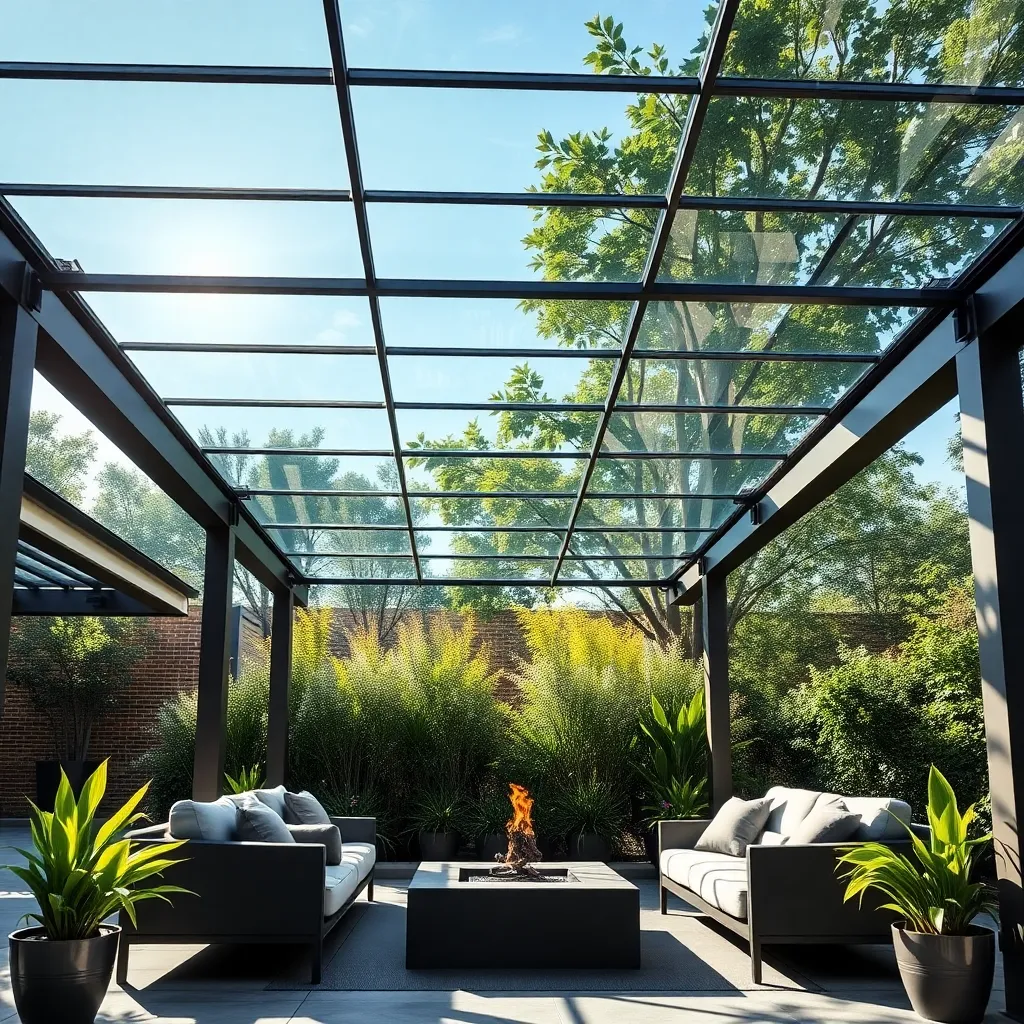
For homeowners seeking a sleek, modern look, transparent glass roof options offer an innovative way to cover patios while maximizing natural light. Choose tempered or laminated glass for durability and safety, ensuring it can withstand varying weather conditions. Consider incorporating a UV-resistant coating to protect against harmful rays and reduce heat buildup, making your patio comfortable year-round.
When designing a glass roof, integrating strong, powder-coated aluminum or steel frames provides the necessary support while maintaining a minimalist aesthetic. Opt for a slight slope in your design to ensure proper water drainage, enhancing both functionality and longevity. For an advanced touch, explore smart glass options that adjust transparency with a switch, offering the perfect balance between privacy and openness.
Integrating Eco-Friendly Green Roofs
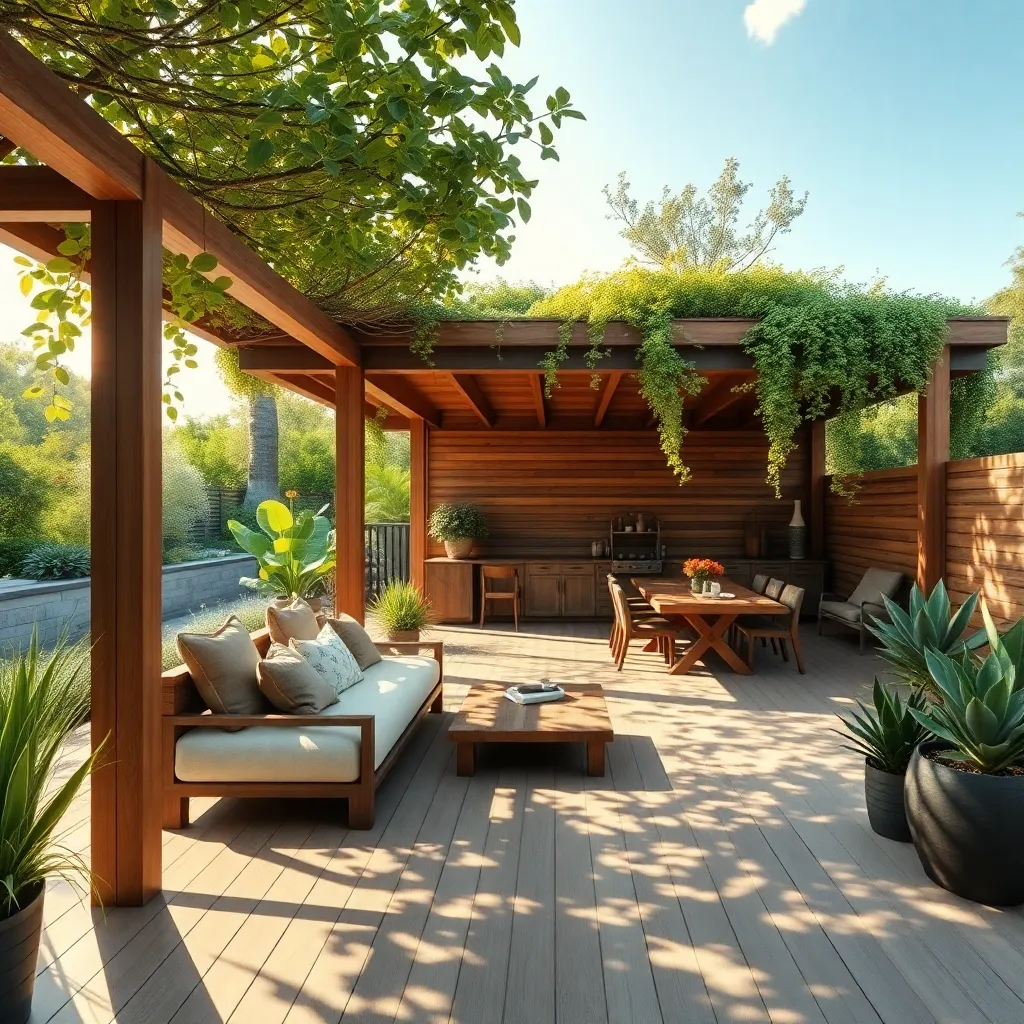
Incorporating a green roof into your patio cover design is an eco-friendly solution that enhances both aesthetics and sustainability. Start by selecting lightweight, durable materials such as aluminum or reinforced wood for the structure. These materials can support the additional weight of soil and plants without compromising stability. For beginners, consider starting with low-maintenance, drought-resistant plants like sedums or succulents, which thrive in shallow soil and require minimal upkeep.
To ensure successful integration, install a waterproof membrane beneath the planting medium to protect the underlying structure. This layer is crucial in preventing water damage and extending the life of your patio cover. For those with more experience, incorporate an irrigation system to maintain consistent moisture levels, enhancing plant health. Additionally, consider the roof’s slope; a gentle incline assists with drainage and prevents water pooling, which can be detrimental to plant roots. By following these guidelines, you can create a vibrant, functional green roof that contributes to biodiversity and energy efficiency.
Stylish Pergolas with Modern Flair
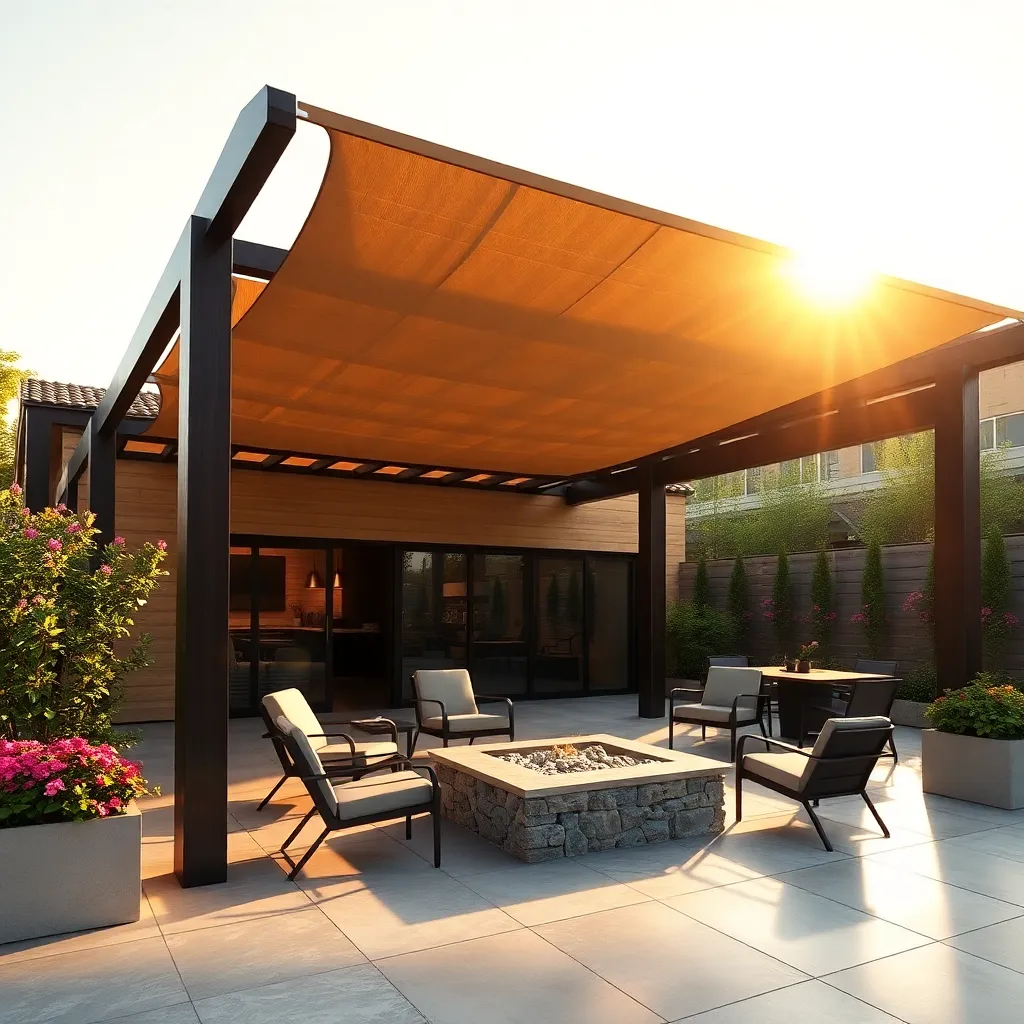
Transform your patio with a stylish pergola that adds a modern flair to your outdoor space. Choose materials like sleek aluminum or powder-coated steel for a contemporary look that requires minimal maintenance. To create a cozy yet sophisticated atmosphere, incorporate adjustable louvers or retractable canopies that allow you to control sunlight and shade. For beginners, starting with a basic 10×10 foot frame can provide ample space without overwhelming your design.
For those seeking advanced customization, consider integrating elements like built-in LED lighting or climbing plants such as clematis or wisteria to enhance the pergola’s aesthetic. Use contrasting colors, such as a dark pergola frame against light-colored furniture, to make your patio pop. Pay attention to anchoring the structure securely; using concrete footings will ensure stability and longevity. These thoughtful details can elevate your pergola from a simple shelter to a striking design feature in your backyard.
Innovative Bioclimatic Pergola Systems
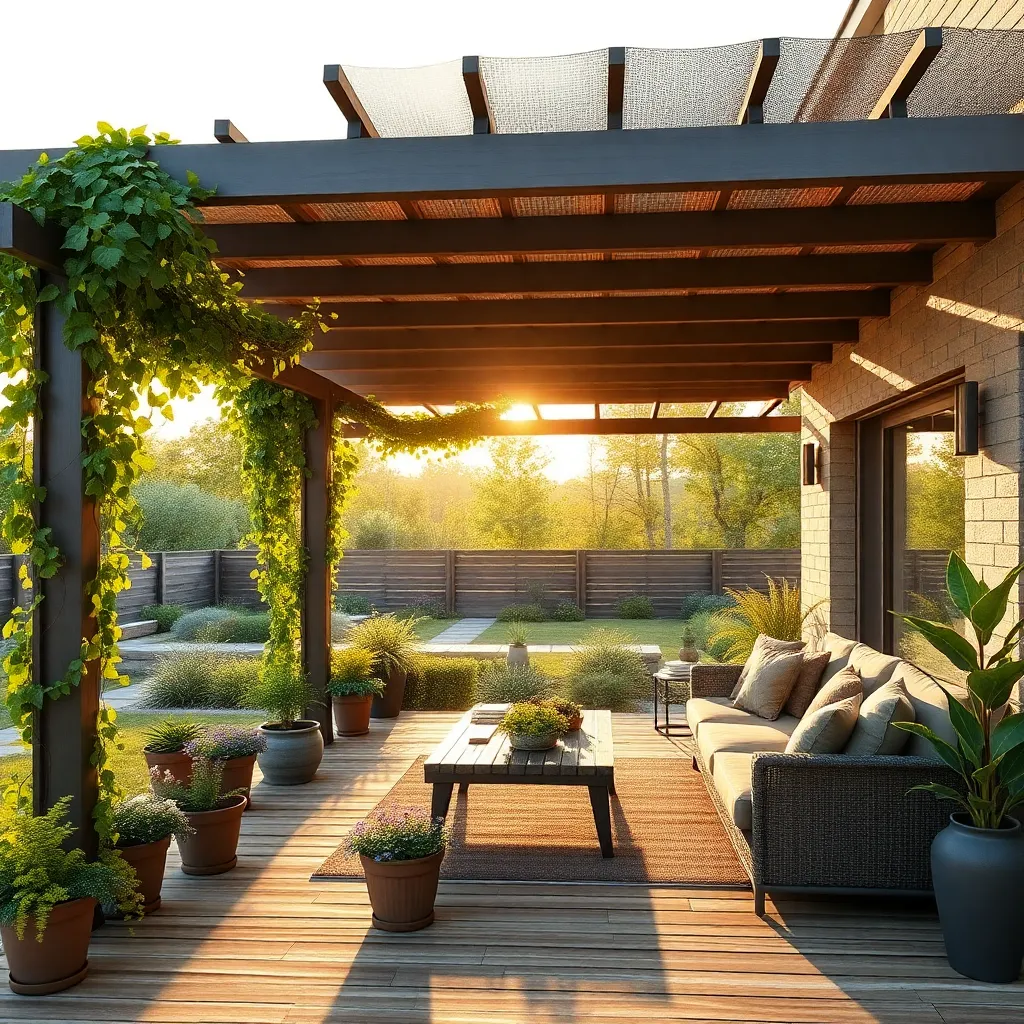
Bioclimatic pergola systems are a cutting-edge solution for homeowners seeking comfort and sustainability in their outdoor spaces. These systems feature adjustable louvers, allowing you to control sunlight and ventilation with precision. For beginners, consider models made from durable aluminum with a powder-coated finish, which resist rust and require minimal maintenance. Advanced users might explore systems with integrated sensors that automatically adjust to weather conditions, providing a hands-free experience.
When designing your bioclimatic pergola, focus on key elements like size and orientation to maximize its benefits. Ideally, the pergola should be positioned to provide optimal shade during peak sunlight hours. Consider dimensions that accommodate your space without overwhelming it, such as a 10×10 foot area for smaller patios. For more personalization, add LED lighting strips or retractable side screens to enhance functionality and ambiance. These additions not only boost usability but also increase the aesthetic appeal of your patio, making it a year-round retreat.
Versatile Louvered Roof Solutions
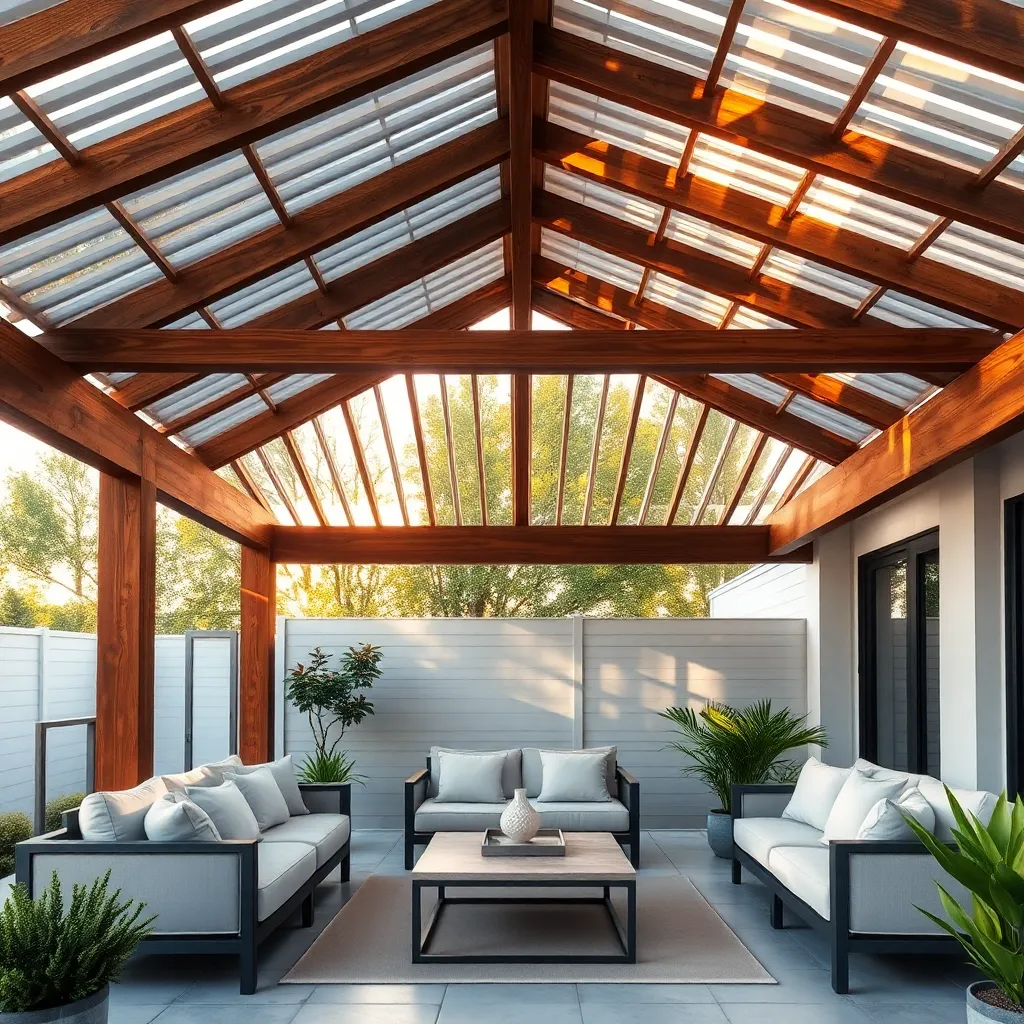
For those seeking a dynamic patio cover, louvered roof solutions offer unmatched versatility. These systems feature adjustable slats, allowing you to control sunlight and ventilation throughout the day. Opt for durable materials like aluminum or powder-coated steel to ensure longevity and resistance to weather conditions. Beginners can start with a basic manual system, while more advanced users might consider integrating motorized options with smart home technology, enabling control via apps or voice commands.
When designing your louvered roof, consider the layout and size of your patio to select the appropriate dimensions. A standard maximum span of 20 feet is ideal for most residential spaces. Incorporate additional elements such as integrated LED lighting or side screens for enhanced functionality and ambiance. For a sleek, modern look, choose a neutral color palette that complements your home’s exterior. With a louvered roof, you transform your patio into a flexible outdoor living area, perfect for any weather condition.
Incorporating Natural Wood Elements
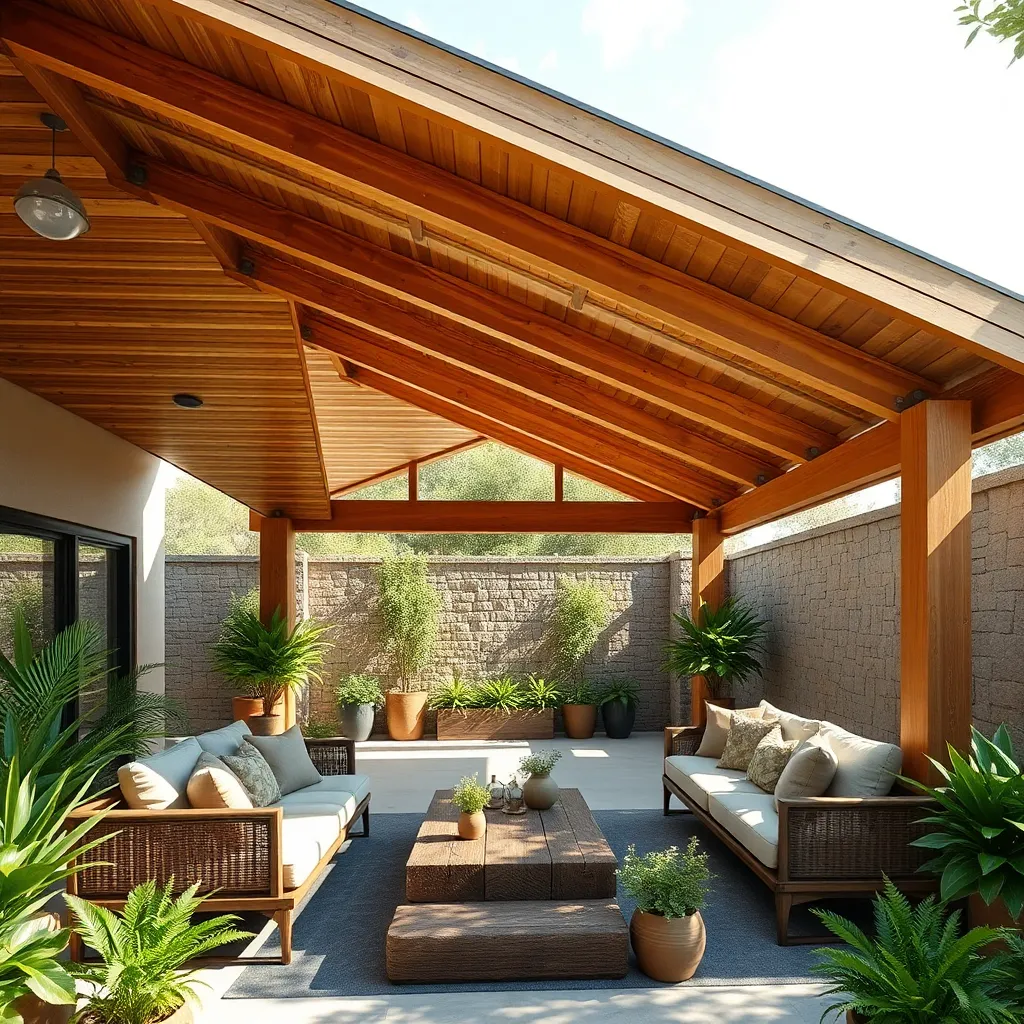
Incorporating natural wood elements into your patio cover design not only adds warmth but also introduces a timeless aesthetic that blends seamlessly with outdoor settings. For beginners, consider using treated cedar or redwood, as these materials are naturally resistant to rot and insects, ensuring longevity. To create a rustic yet modern look, you can install wooden beams or latticework for partial shade, while advanced DIY enthusiasts might opt for a full wooden pergola structure. Always ensure the wood is sealed and maintained regularly to withstand various weather conditions.
For a more personalized touch, you can mix wood with other materials like metal or glass to create a unique, contemporary design. Think about incorporating metal brackets or glass panels to enhance the visual appeal and structural integrity of your shelter. Advanced gardeners might consider integrating trellises into the design, allowing climbing plants to grow and add natural shade over time.
- Choose wood that complements your home’s exterior tones.
- Opt for sustainable wood sources to support eco-friendly practices.
- Regularly inspect and treat your wooden structures to prevent weather damage.
These thoughtful additions can transform your patio into a stunning, functional space that serves as an inviting retreat all year round.
Adding Charm with Fabric Awnings
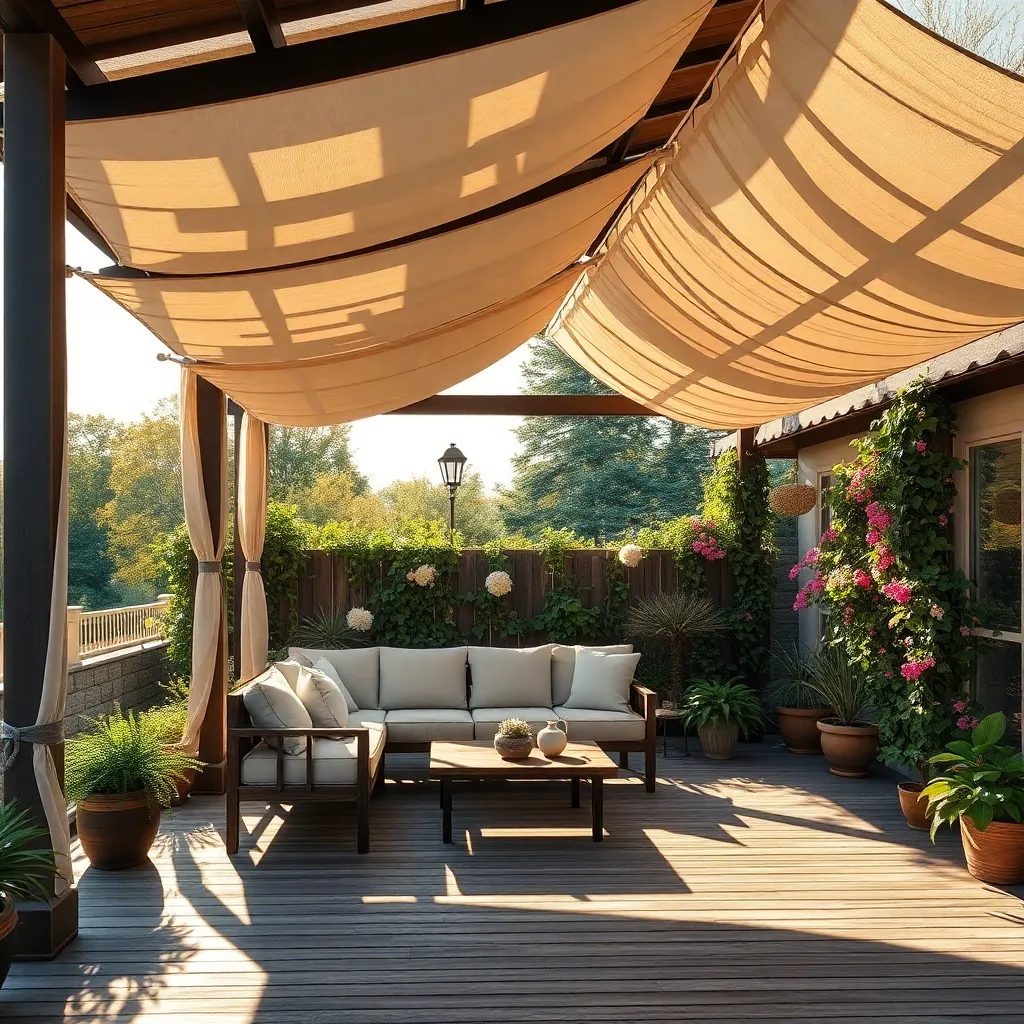
Fabric awnings are an excellent way to add charm and functionality to your patio, offering both style and protection from the elements. To start, consider using weather-resistant materials like acrylic or polyester, as these fabrics are known for their durability and UV protection. For a beginner-friendly installation, look for retractable models that allow flexibility in shading your space throughout the day. The addition of a bold color or pattern can also serve as a focal point, enhancing the overall aesthetic of your outdoor area.
Enhance your awning’s appeal by incorporating additional design elements like string lights or hanging plants. For a more advanced touch, consider custom-made awnings that contour to unique patio shapes, ensuring a perfect fit. When selecting dimensions, ensure the awning covers at least 80% of the seating area for optimal shade. Ensure proper mounting to withstand windy conditions—stainless steel brackets and anchors are recommended for stability. With these tips, your fabric awning will not only provide shade but also transform your patio into a stylish retreat.
Minimalist Steel Framework Designs
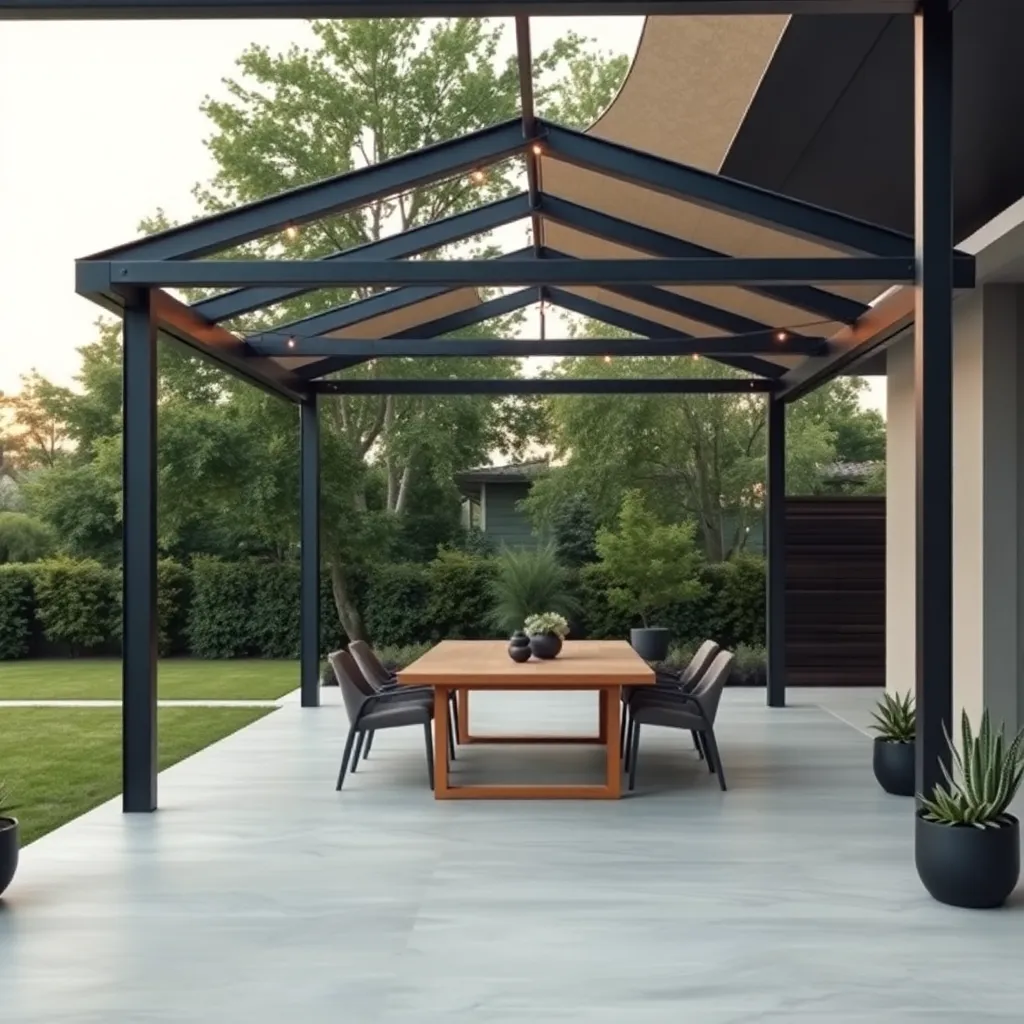
For a sleek and contemporary look, minimalist steel framework designs are an excellent choice for your patio cover. Utilizing materials like galvanized or powder-coated steel ensures durability while maintaining a clean aesthetic. Beginners can start with a simple rectangular frame—opt for steel beams with a 2×4 inch dimension for a balanced blend of strength and subtlety. Ensure proper anchoring by securing the posts into concrete footings, which is crucial for stability and longevity.
Incorporating advanced design elements can elevate your minimalist steel structure. Consider adding a polycarbonate or tempered glass roof to provide weather protection without sacrificing natural light. For those with more experience, explore integrating LED strip lighting along the beams to create a cozy ambiance for evening use. Remember to check local building codes for any specific requirements or restrictions before starting your project, ensuring a hassle-free installation process.
Classic Meets Modern: Hybrid Covers
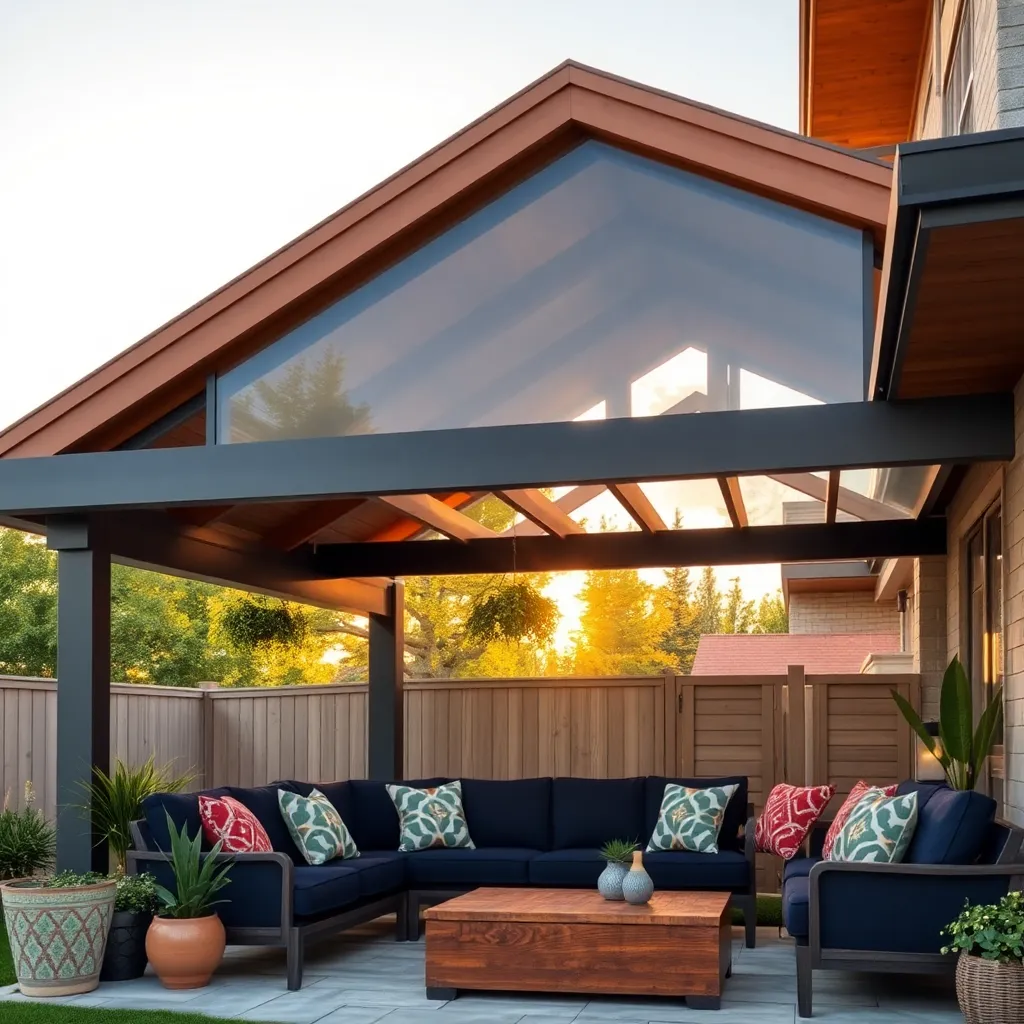
Blending the charm of traditional styles with the sleekness of modern design, hybrid covers offer a stunning, versatile option for your patio. These covers typically combine materials like wood and metal, providing both durability and aesthetic appeal. Beginners might start with a simple wooden frame, adding a metal or polycarbonate roof to achieve a contemporary look. Ensure the dimensions match your patio space, typically extending at least 10 feet in width for adequate coverage.
For those ready to dive into advanced techniques, consider integrating custom lighting or retractable panels into your hybrid cover design. This allows for adjustable shade and ambiance, perfect for varying weather conditions. When selecting materials, opt for treated wood to withstand outdoor elements and powder-coated metal for a sleek finish. By combining these elements, you’ll not only enhance the functionality of your outdoor space but also create an inviting, stylish retreat.
Enhancing Spaces with LED Lighting

To transform your patio into an enchanting evening retreat, consider integrating LED lighting into your outdoor shelter design. Begin by choosing waterproof LED strips or fixtures specifically rated for outdoor use to withstand various weather conditions. Install lights under railings, along beams, or around the perimeter of your cover to create a warm, inviting glow. For beginners, starting with solar-powered LED options can be a fuss-free way to add ambiance without the need for complex wiring.
For those looking to enhance the space further, consider advanced features like color-changing LEDs, which can be controlled via smartphone apps for a customizable experience. Incorporating dimmable settings allows you to adjust the brightness according to the occasion, whether it’s a lively party or a quiet evening with a book. Pay attention to the placement and angle of your lights to highlight architectural features or specific areas, ensuring a balanced and aesthetically pleasing look. With these techniques, your patio cover will not only be functional but also a stunning focal point of your outdoor space.
Conclusion: Creating Beautiful Outdoor Spaces
In exploring the ’12 Modern Patio Cover Designs to Try This Year,’ we’ve discovered a trove of relationship wisdom hidden in the beauty of outdoor creativity. Just as each patio cover offers unique shelter and charm, so too do our relationships require diverse approaches to thrive. From the simplicity of a pergola to the elegance of a louvered roof, these designs remind us of the importance of flexibility, openness, and intentionality in nurturing our connections. The key concepts include adaptability, communication, the balance of individuality and togetherness, and the art of creating shared spaces that invite growth and intimacy.
Now, take a moment to reflect on which design resonates most with your current relationship dynamic. Consider initiating a conversation with your partner about building or strengthening this aspect together. As a next step, why not plan a small project or date that embodies these qualities?
Remember, the journey to a fulfilling relationship is ongoing and ever-evolving. Bookmark this article to revisit these insights whenever you need inspiration or guidance. As you cultivate these principles, know that your efforts today are paving the way for a resilient and harmonious future together. Here’s to creating lasting love and beautiful spaces—in our homes and hearts.

